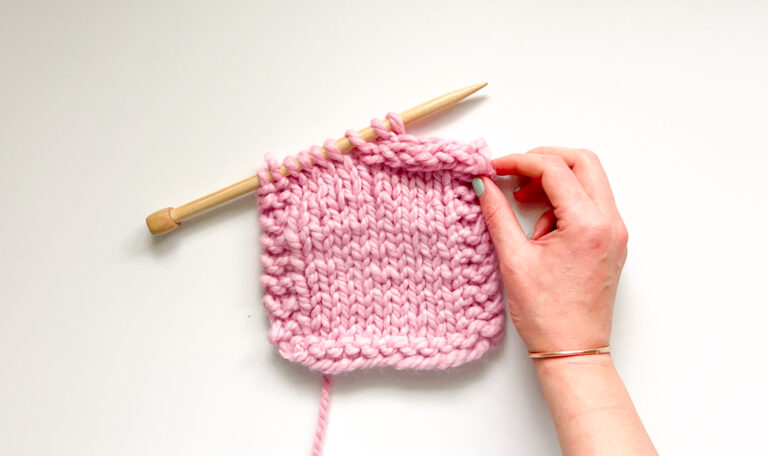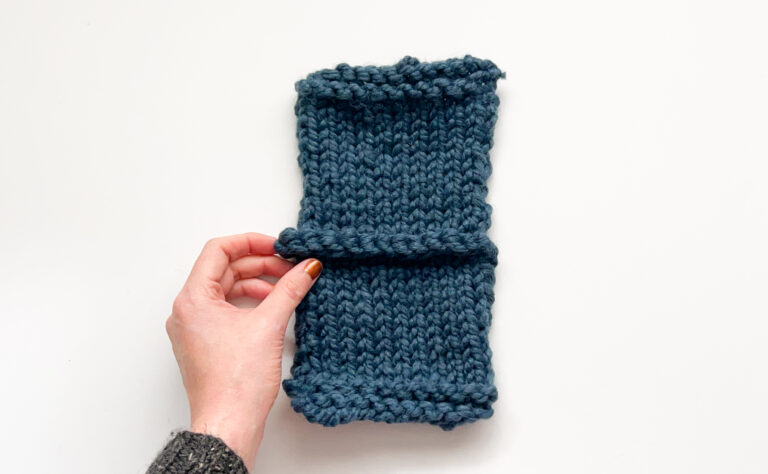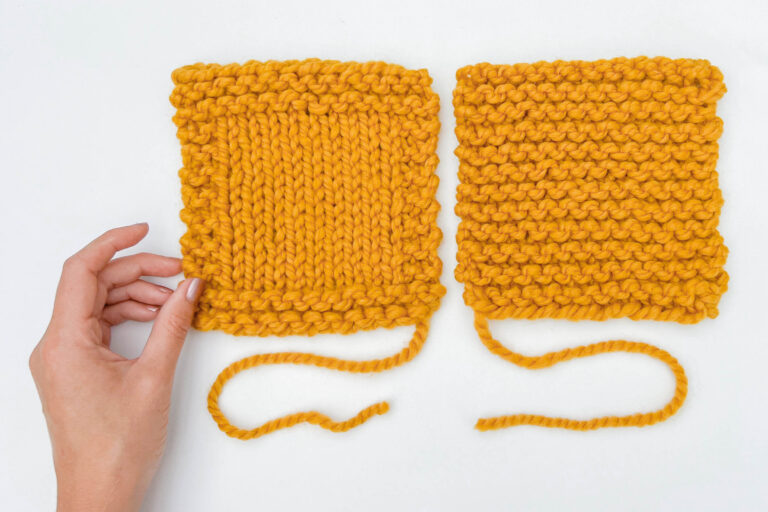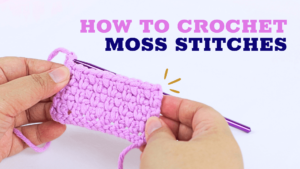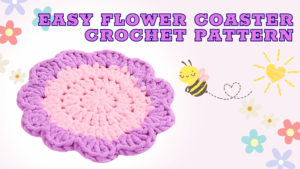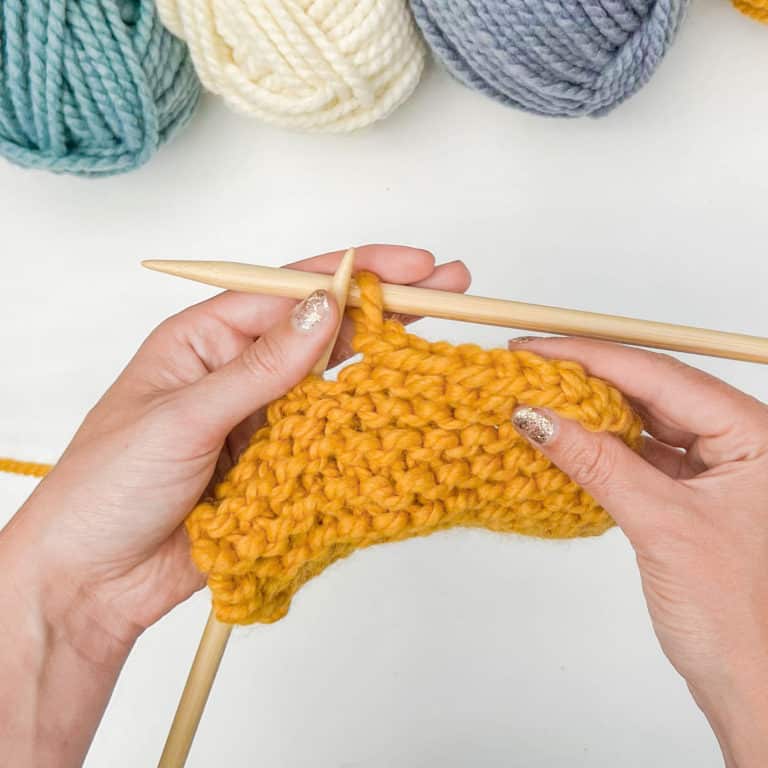

How to Bind Off Knitting
Your project is all done and ready to take off the knitting needles!
Binding off takes the stitches off of the knitting needles in a way that keeps them from unraveling. If you just slid the stitches off of the needles without binding off your project will immediately start to unravel as the live stitches drop down through the knitted fabric.
There are so many different ways to bind off knitting projects. Each technique was designed with a specific purpose in mind. Some create a stretchy bind of knitting edge, others are fast and simple, while a few specialty cast off methods create a decorative edge. Learning how to work a variety of different bind off knitting techniques guarantees that you’ll have a perfect edge for every project!
Whether you’re doing a simple project like a dishcloth or trying a complicated stitch pattern, we’ve got the best casting off knitting techniques you need to get started finishing any project!
Binding Off vs. Casting Off Knitting
Binding off is also called “casting off” knitting. These terms are interchangeable, however, you’ll find “binding off knitting” to be more commonly found in the united states and “casting off” used in the UK.
Bind Off Knitting
Methods Pros & Cons
Compare different ways to bind off knitting with a quick at-a-glance guide!
How to Bind Off Knitting
For Beginners
Learning how to cast off knitting doesn’t have to be hard!
Start with the simplest bind off methods for easy, stress-free finishing. These sturdy edges are perfect for all sorts of projects.

The simple knit stitch can be used to bind off your next knitting project.
This technique is easy to memorize and creates a nice, sturdy edge for any knit project. Whether you’re already familiar with the knit stitch or just getting started, this bind off is a great time to practice.
The basic knit bind off is especially good for simple projects like dishcloths, afghans, or scarves with edges that don’t need to flex or stretch to fit.
Stretchy Bind Off Knitting Techniques
Keep those edges flexible with special stretchy bind off knitting methods.
Prized by knitters of all levels, stretchy bind off knitting techniques are worth mastering. Before you find yourself at the finish line of a project that needs a stretchy bind off rate time to get to know each of these elastic finishes.
There are quite a few especially stretchy cast off techniques to choose from. The big difference between these techniques is not necessarily how stretchy they are. Instead, it’s more about how much time it takes to work each bind off. Make sure to check the reference guide above to get an idea of the pros and cons of each bind off.
Tubular Bind Off
The tubular bind off takes a bit more time and effort than other cast off methods. However, the results are well worth it!
The finished edge has a particularly polished, professional finish for a comfortable, flexible fit.
Jeny’s Stretchy Bind Off
One of the best things about this technique is its simplicity. Easy to learn and quick to work up this bind off produces beautiful, stretchy results every time.
Jeny’s only requires a basic understanding of knit and purl stitches, making it accessible to knitters of all skill levels!
Sewn Bind Off
The technique involves using a darning needle to sew the live stitches together, creating a chain-like edge that is both strong and flexible.
While this method produces a finished edge that is slightly less stretchy than some other bind off methods, it does create a clean and polished look that is perfect for many projects.
Specialty Bind Off
Knitting Techniques
These bind off knitting methods do more than just finish to your project.
These cast of knitting techniques are unusual. While you won’t find these used in patterns often, we love each of these cast off knitting methods. Knowing how these bind off’s work will make it easy to substitute one of these useful-yet-decorative finishes into an existing pattern. Make sure to check the reference guide above to get an idea of the pros and cons of each bind off.
Create a beautiful, rounded edge on any knit project.
The I-cord Bind off is easy! This technique quickly creates a reversible, rolled edge that helps keep knits from curling and adds a sturdy finish for long-lasting projects.
Try the I-cord Bind Off on washcloths, sleeve cuffs, and hat brims!
Seam two pieces of knitting while binding off!
This sturdy seam is decorative, functional, and easy!
The 3 Needle Bind Off creates a raised ridge seam using two live-edges. While still on the knitting needles, a third needle knits two stitches (one from each needle) together before binding those stitches off across the row.
How To Cast Off Knitting:
Learn with VideoS
Learning how to cast off knitting can be tricky. Get some extra support with our video series!
Learning different cast offs for knitting doesn’t have to be confusing, sometimes you just need to see the motions in action. Our video series includes beginner basic bind off techniques as well as useful specialty methods. Try them all to see what works for your next knitting project.
How to Bind Off for Knitting
Common Bind Off Questions
Binding off knitting can be confusing! We’re here to help with a list of common questions about different bind off knitting methods.
While all bind off methods can be learned as a beginner, the basic knit bind off is fast, easy, and can be done in just a few steps.
We always recommend doing a test swatch before a project. This gives you a chance to make sure you like the fabric you’re making with the yarn & needles you’ve chosen AND gives you a chance to try different cast on and bind of methods.
Yes! If you’re not happy with the finished edge you can try again. To undo a bind off, carefully pick out the stitches. To redo a bind off, simply work the new bind off method. However! If you’ve already cut the yarn you might need to join more yarn to do a bind off for a second time.
There isn’t a difference between binding off and casting off! The terms are interchangeable and are used to describe a variety of techniques for getting the stitches off your knitting needles.
Learn More: How to
Finish Your KNits
How to take care of those pesky yarn tails.
While it’s tempting to just snip the leftover yarn off your project, don’t! Eventually the knit fabric you worked so hard to make will start to unravel.
Instead, learning how to weave the yarn tails into your finished fabric will ensure your project looks great and lasts for years without a problem.
